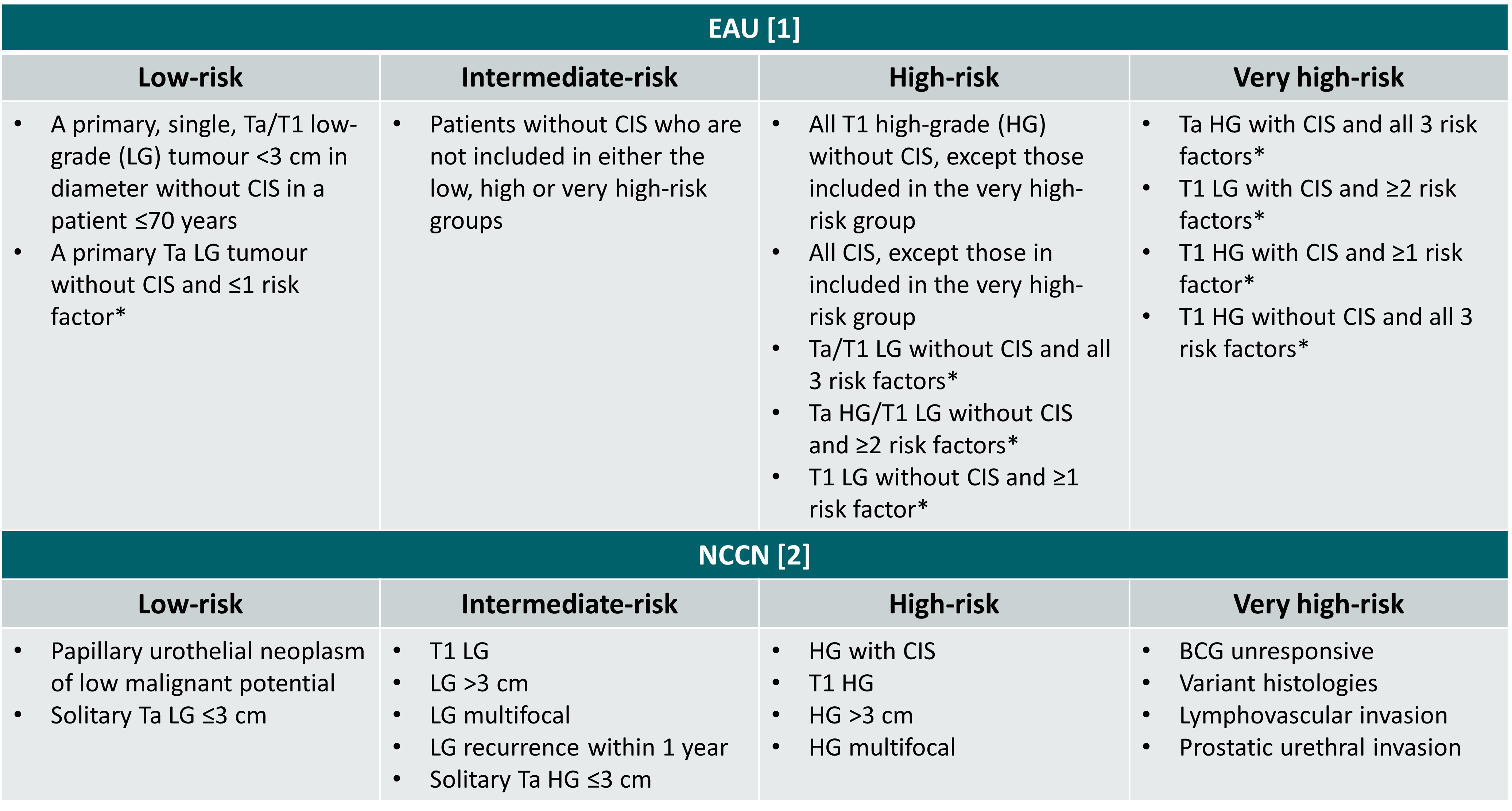Bladder cancer
Follow-up surveillance regimes to consider for (very) high-risk NMIBC and MIBC
Lernziel: Gain insight into individual follow-up surveillance regimes in patients with high-risk/very high-risk non-muscle-invasive bladder cancer (NMIBC) and muscle-invasive bladder cancer (MIBC).
Fachgebiet: Urology
Zielpublikum: Specialists (CME: basic, intermediate), Residents (senior)
Letzte Aktualisierung: May 2024
Hintergrund:
- Patients with NMIBC and MIBC need surveillance following therapy due to the risk of recurrence and progression
- Surveillance protocols should be tailored to the risk of recurrence and progression, and depend on prior therapeutic interventions
NMIBC risk stratification according to the EAU and NCCN guidelines

*Clinical risk factors: age >70; multiple papillary tumours, tumour diameter >3 cm; LG: low grade; HG: high grade
- Gontero P, Birtle A, Compérat E, et al. European Association of Urology (EAU) guidelines on non-muscle-invasive bladder cancer (TaT1 and CIS). Update April 2024. Available at: https://uroweb.org/guideline/non-muscle-invasive-bladder-cancer
- Flaig TW, Spiess PE, Abern M, et al. National Comprehensive Cancer Network (NCCN) clinical practice guidelines in oncology: bladder cancer. Version 4.2024. Available at: https://www.nccn.org/guidelines/category_1
